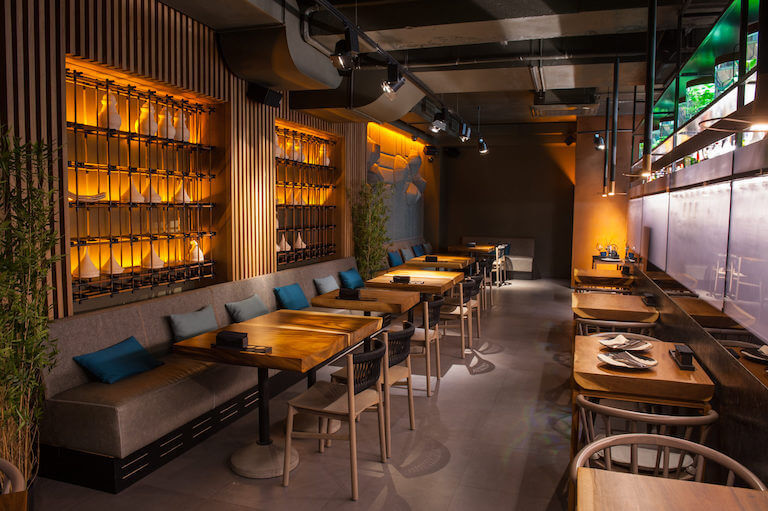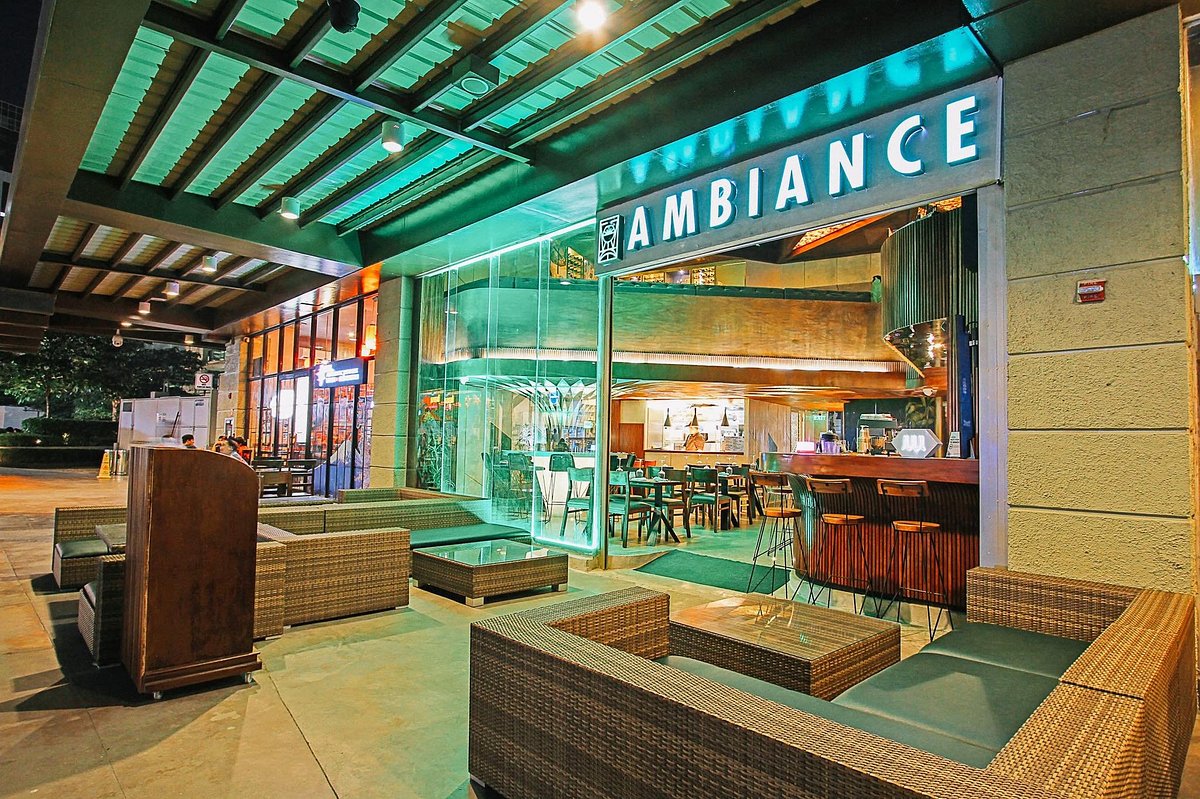Asian Fusion Restaurant: A Distinct Dining Experience in the Heart of Islamabad
Asian Fusion Restaurant: A Distinct Dining Experience in the Heart of Islamabad
Blog Article
Savor Genuine Oriental Food With a Pan-Asian Twist for a Culinary Journey
Getting started on a culinary journey with genuine Oriental cuisine, enhanced with a Pan-Asian twist, provides a special possibility to discover the abundant tapestry of flavors that specify the region's diverse culinary customs. As you consider these attracting dishes, take into consideration the cultural narratives and historic impacts that form them, each bite providing a story waiting to be uncovered. Fine dining experience Islamabad.

Exploring Pan-Asian Flavors
In the realm of worldwide gastronomy, Pan-Asian cuisine stands apart for its remarkable variety and the unified interplay of tastes from different Oriental societies. This culinary technique celebrates the rich traditions and special active ingredients found across the continent, creating a tapestry of preferences that is both satisfying and fascinating. Trick to Pan-Asian food is its ability to stabilize different tastes-- sweet, salted, spicy, and sour-- while highlighting the quality and quality of each ingredient.
From the umami-rich soy sauce of Japan to the intense chili peppers of Thailand, Pan-Asian food supplies a considerable scheme of tastes. These components are typically combined in innovative means, improving meals with layers of complexity. For example, the use of aromatic natural herbs such as lemongrass and cilantro, typical in Vietnamese and Thai food, includes a refreshing illumination to recipes, while the incorporation of coconut milk delivers a velvety, rich appearance.
The focus on fresh fruit and vegetables and aromatic seasonings makes sure that each dish is not only a banquet for the taste yet also for the senses. Pan-Asian cuisine welcomes diners to get started on a culinary trip, exploring the vast and differed landscapes of Oriental gastronomy with every bite.
Combination Meals to Attempt
While Pan-Asian cuisine is celebrated for its typical tastes, the contemporary culinary landscape is significantly accepting blend dishes that mix these traditional components with impacts from various other regions. This cutting-edge approach not only honors the rich heritage of Eastern culinary arts but also introduces unique taste experiences that interest contemporary palates.
An archetype of such a combination recipe is the Korean-Mexican taco, where marinated bulgogi beef is covered in a cozy tortilla, topped with kimchi and a zesty gochujang-infused salsa. This combination weds the vibrant, savory tastes of Korea with the lively, fresh aspects of Mexican food. Likewise, sushi burritos have actually gained popularity, joining together the delicate virtuosity of Japanese sushi with the hearty, hand-held ease of a burrito, frequently featuring fusion components like tempura shrimp and avocado with a drizzle of wasabi mayo.
Another significant recipe is Thai curry ramen, which infuses the creamy, fragrant flavors of Thai curry into the reassuring brew of conventional Japanese ramen, producing a harmonious mix that entices the detects. These blend meals expand past simple novelty; they represent a culinary discussion in between societies, motivating exploration and technology in the globe of Pan-Asian food.
Important Components and Flavors
To really appreciate Pan-Asian food, one need to recognize the essential components and flavors that form its foundation. This varied culinary style attracts from a rich tapestry of Asian customs, employing a harmonious blend of textures and tastes.
Aromatic elements are critical, with garlic, lemongrass, and ginger being ubiquitous across numerous Pan-Asian dishes. These active ingredients offer a great smelling base that enhances the complexity of tastes. Spices such as celebrity anise, cardamom, and cinnamon present warmth and character, resembling influences from areas like China and India.

Cooking Methods and Tips
Understanding the art of Pan-Asian food needs knowledge with its unique food preparation strategies, each adding to the vibrant tapestry of tastes this cooking custom is celebrated for. Central to these techniques is the stir-fry, a fast food preparation technique that preserves the nutritional stability and dazzling colors of components. Utilizing a wok, the stir-fry approach permits for even heat circulation, important for accomplishing the particular appearance and taste equilibrium of Pan-Asian meals.
An additional fundamental technique is steaming, particularly common in Chinese cuisine. This gentle method maintains the natural tastes and nutrients of ingredients, making it excellent for fish and shellfish and vegetables. Dumplings, a precious staple, usually take advantage of steaming, resulting in soft, delicious structures.
Grilling, also important, gives great smoky midsts to recipes such as Korean bulgogi or Japanese yakitori (asian fusion restaurant). This strategy frequently entails marinading active ingredients, permitting flavors to permeate deeply before cooking over an open fire or warm plate
Last but not least, understanding the art of balancing tastes-- pleasant, sour, salted, bitter, and umami-- is crucial. Effectively layering these elements can raise a dish from ordinary to extraordinary, using a complicated and satisfying cooking experience that personifies the essence of Pan-Asian food.
Dining Experiences Worldwide
Around the world, Pan-Asian cuisine offers an exceptional dining experience, celebrated for its rich tapestry of tastes and vibrant presentations. This cooking sensation has gone beyond cultural limits, capturing the hearts and tastes buds of food lovers worldwide. In multicultural cities fresh York, London, and Sydney, Pan-Asian restaurants act as fusions where cooking practices from Thailand, Japan, China, and past merge, providing restaurants with an eclectic mix of meals that highlight the area's variety.
The international charm of Pan-Asian cuisine hinges on its ability to use both credibility and technology. Cooks masterfully marry traditional components such as lemongrass, soy sauce, and miso with contemporary techniques, causing recipes that are both familiar and refreshingly new. This fusion permits restaurants to embark on a culinary trip that appreciates heritage while embracing modernity.
Moreover, dining experiences are boosted with thoughtfully created settings that show the ethos of Pan-Asian appearances. From minimal Japanese-inspired interiors to dynamic Thai-themed rooms, each restaurant provides a special atmosphere that matches the review culinary offerings. Because of this, customers are not simply consuming a dish yet partaking in a cultural experience, making Pan-Asian eating a genuinely worldwide phenomenon.
Conclusion
The expedition of Pan-Asian cuisine uses an extensive understanding of the intricate interaction of tastes and cooking customs throughout Asia. By welcoming fusion dishes such as bar and restaurant near me Thai curry ramen and sushi burritos, the culinary trip not only highlights the adaptability of conventional components yet likewise showcases cutting-edge modern-day methods. This gastronomic journey, enhanced by cooking approaches and vital flavors, supplies an unique chance to appreciate the social variety and culinary creativity that specify Pan-Asian cuisine on a worldwide scale.
Embarking on a cooking journey via genuine Eastern cuisine, enhanced with a Pan-Asian spin, offers an one-of-a-kind possibility to discover the rich tapestry of flavors that define the area's diverse cooking traditions.In the world of worldwide gastronomy, Pan-Asian food stands out for its remarkable diversity and the harmonious interaction of tastes from numerous Asian societies. Key to Pan-Asian cuisine is its capability to stabilize contrasting tastes-- pleasant, salted, spicy, and sour-- while highlighting the freshness and quality of each ingredient.

Report this page